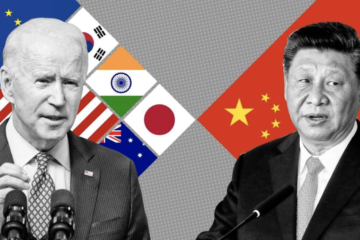This Sunday, the Revolutionary Armed Forces of Colombia (FARC) will end the two-month ceasefire they set (in November of last year) without the approval of the Colombian government. The conflict, which begun in 1964, has entered its most recent round of peace talks, with the last ones being held over 10 years ago. Unfortunately, this ceasefire will end on Sunday on a rather bitter note. Despite the reduction of violence, both sides have carried out attacks throughout the truce, with the FARC being blamed for attacking 22 Colombian soldiers and killing 4, while government attacks killed around 34 rebels. The Colombian government constantly rejected FARC’s ceasefire, saying it will not abide by it. Not only did the fighting continue, but also Colombian intelligence says it is anxious over the possibility of a fresh, aggressive attack by the FARC as soon as the ceasefire ends, as the group used the truce to regroup, rearm and reorganize. With FARC’s apparent desire to disregard its own ceasefire, the Colombian authorities have every reason to be anxious about the events that may come after Sunday’s deadline. So what happens next?
The government is especially keen to propel the peace talks forward, putting extra pressure on the rebel group and negotiators to speed up the process; with President Santos setting a deadline for achieving peace at November. Given the sustained reluctance of the FARC to cooperate with the government and the complexity of the issues to resolve (drug trafficking, social inequality and irregular land distribution to name a few) November may be a slightly idealistic deadline. However, when peace talks do resume in Havana, there are certain things the Colombian government can work on to ensure the talks move forwards:
First of all, both the government and rebel army must find common ground on which to work on. Many of the issues the FARC has with the government, are also problems the government itself is seeking to solve. An example would be that of inequality in land ownership mentioned above, which both bodies are seeking to remedy. Another way of ensuring continued pressure on the rebels would be for the government to occupy larger strips of uninhabited land or land close to FARC control, in order to increase government reliability and to secure the trust of the local population. Also, despite FARC’s reluctance to reach a peace agreement, it is clear that they are taking the option seriously. They continued talks with the government after the leader who initiated the talks, Alfonso Cano, was killed, and despite government attacks throughout the ceasefire, the group has not left the table. This is partly due to their severely weakened position, which has also led to the creation of a more realistic agenda for the peace talks this time round; as opposed to an upheaval of Colombia’s political and social structure as previously sought by the FARC. With Colombia increasing its defense spending from $5.6bn to $10.4bn between 2000-10, and with FARC’s forces numbering only around 8,000, it is clear that the Colombian government is in a much better bargaining position this time round. A more achievable approach to the peace talks, together with a more aggressive government and weakened FARC bode well for the future; however, in a conflict that has dragged on for more than five decades, perhaps November seems a little optimistic.
By: Amanda Felberg
Image Source: Emol



